
Address: Nevsky Prospekt, 48
This building, one of the oldest department stores in Eastern Europe, was built in the middle of the 19th century on Nevsky Prospekt, the main street of the Russian capital at the time. The architect was Rudolph Zhelyazevich.
It was a covered 180-sq. meter gallery with a glass-pane roof. Apart from stores, in different years, you could find a French bank, a hotel, an anatomy museum, a mechanical theater, a wax sculpture museum, a cabaret, dioramas and a concert hall in the Passage. Since 1942, it has housed the Komissarzhevskaya Theater.
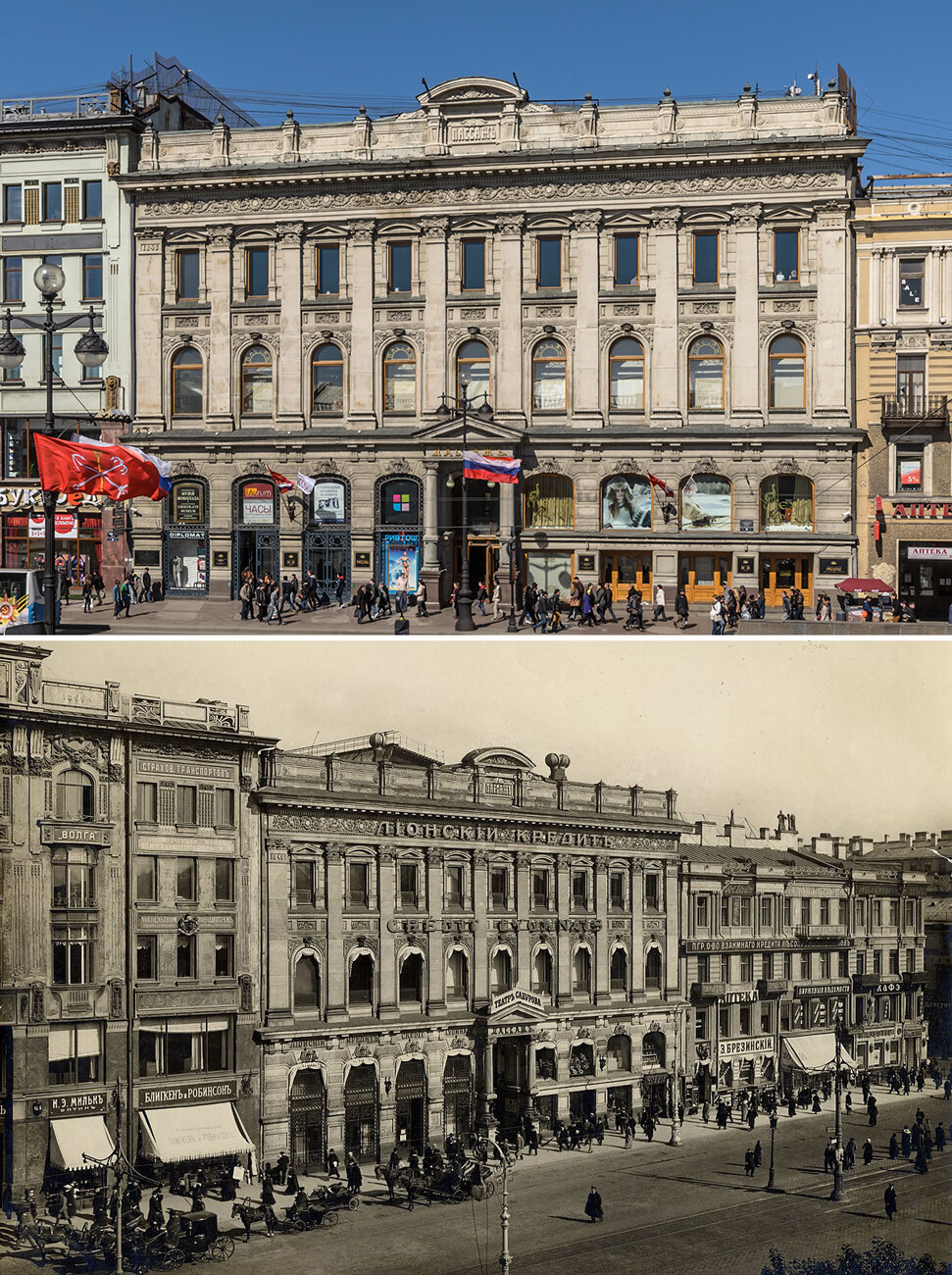
Once, the building even hosted a menagerie, with a live crocodile in a big bathtub. Fyodor Dostoevsky, impressed by the exotic exhibit, wrote the satirical story ‘The Crocodile’ – about how the alligator swallowed a person whole.
In Soviet times, ‘Passage’ hosted a state department store.
Today, historical interiors and signboards have been restored in the ‘Passage’. You can buy women’s clothing, jewelry, cosmetics, small wares, as well as flowers and household items. A grocery store, meanwhile, operates on the basement floor.
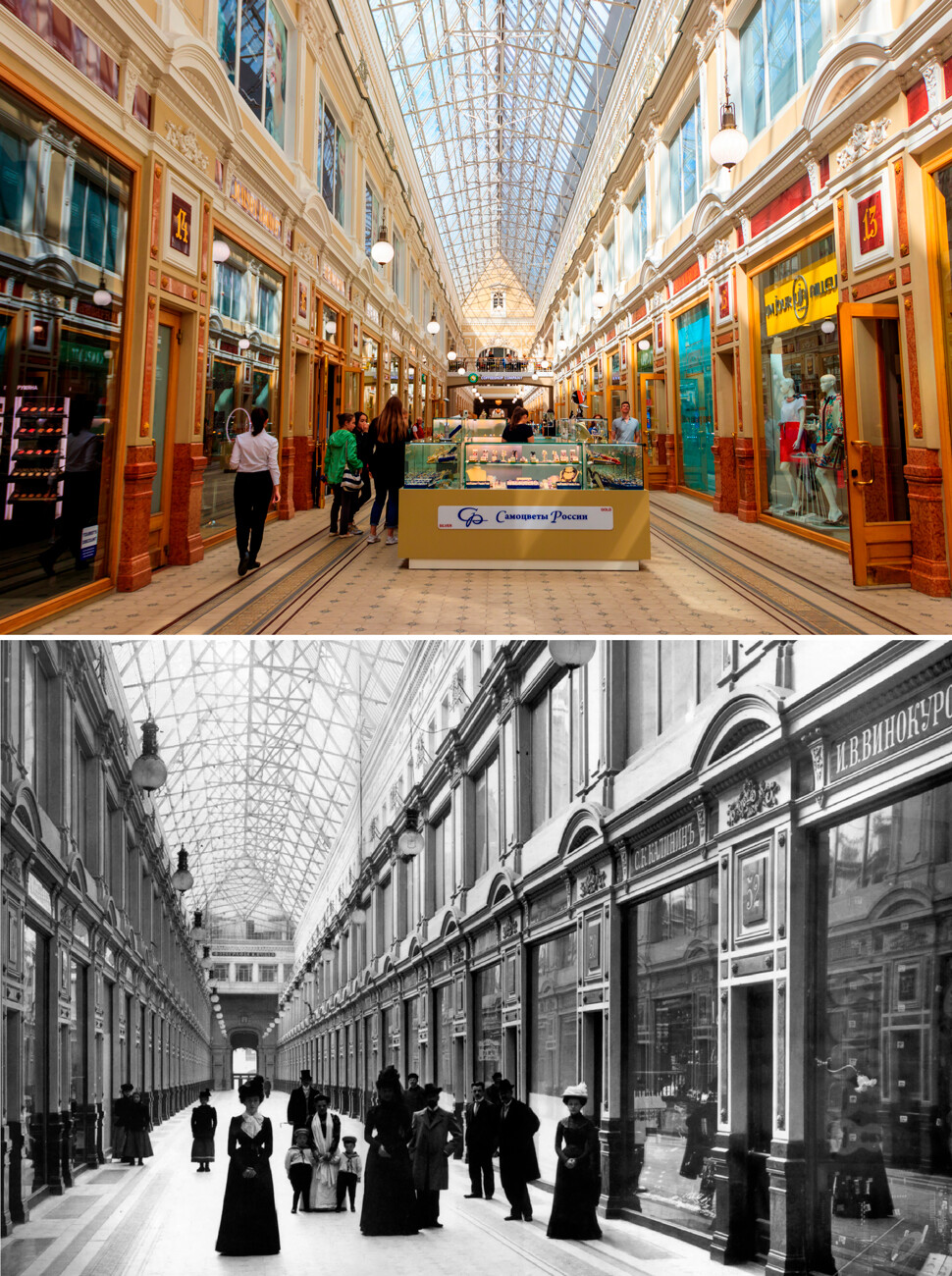
Address: Nevsky Prospekt, 28
This building was constructed for the Russian headquarters of the American ‘Singer Sewing Machine Company’. Today, the building is occupied by the most famous bookstore in the city, as well as serving as office space for social network company ‘Vkontakte’.
The American project sponsors wanted an eight-story (according to other sources – eleven-story) “skyscraper” office similar to those built in the United States. However, height regulations intervened with these plans.

Then, chief city architect Pavel Suzor took over as the author of the project. In 1904, he built a six-story building with an atrium, an attic and a corner glass dome. Top-notch technology of the time was used during construction. The building received a metal frame, drain pipes were hidden in the walls, the air came into the rooms of the house conditioned (a revelation at the time); the roof, meanwhile, was automatically cleared of snow with the help of steam.
Books settled in the ‘Singer House’ in 1919 with the arrival of the St. Petersburg branch of the State Publishing House of RSFSR and the store with its wares.
The tradition of selling books in ‘Singer’ survives to this day. Aside from that, a part of the second floor is occupied by a restaurant.
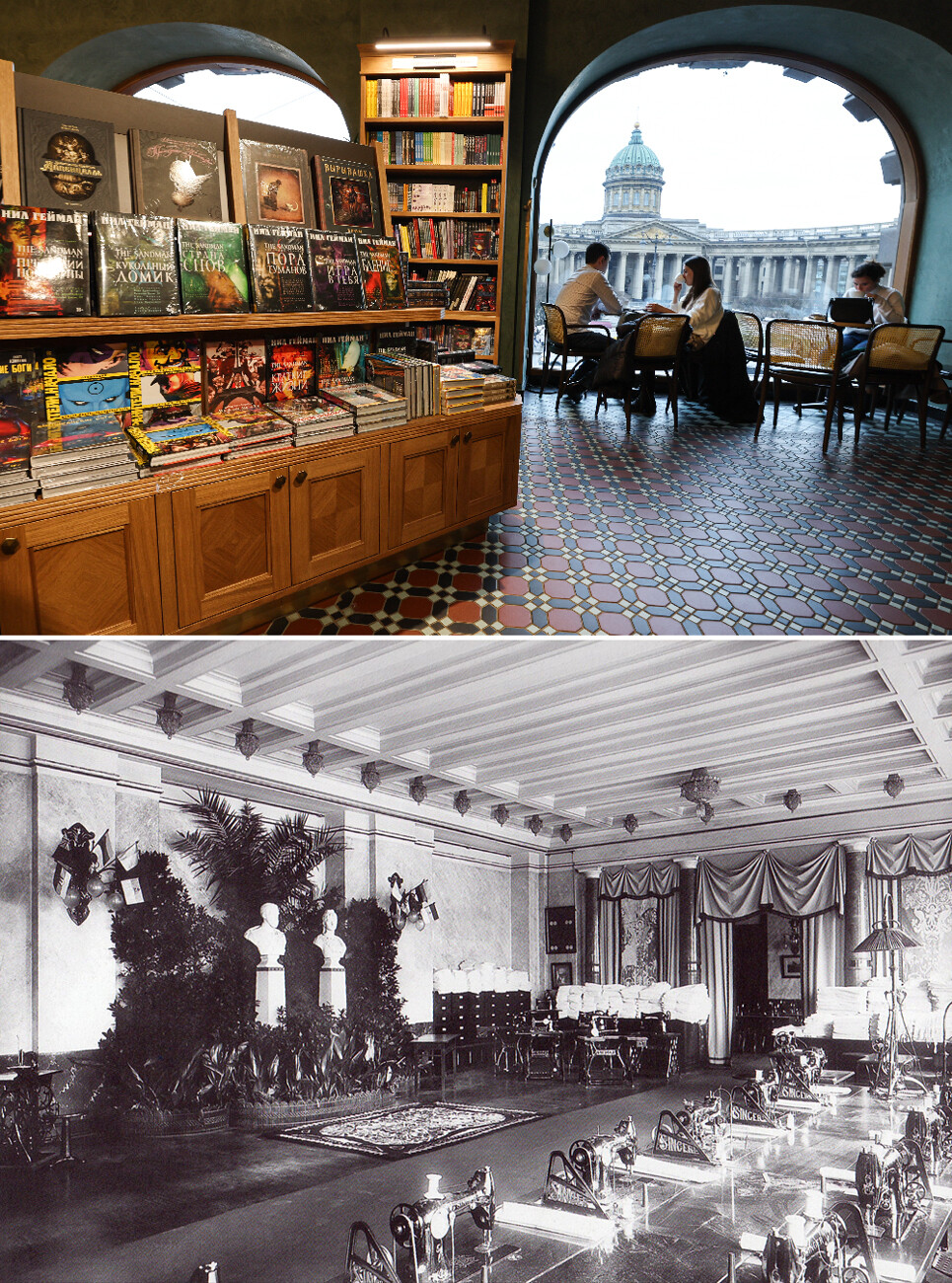
Address: Moika River Embankment, 73
This elegant five-story building in the Art Nouveau style, crowned by the scepter of the patron of trade, Mercury, was built in 1907, commissioned by Belgian-Austrian businessman Stefan Esders.
The project was completed by St. Petersburg architects Konstantin de Rochefort and Vladimir Lipskiy, with the department store becoming the first multi-story store in St. Petersburg. The imperial family was among its clientele.
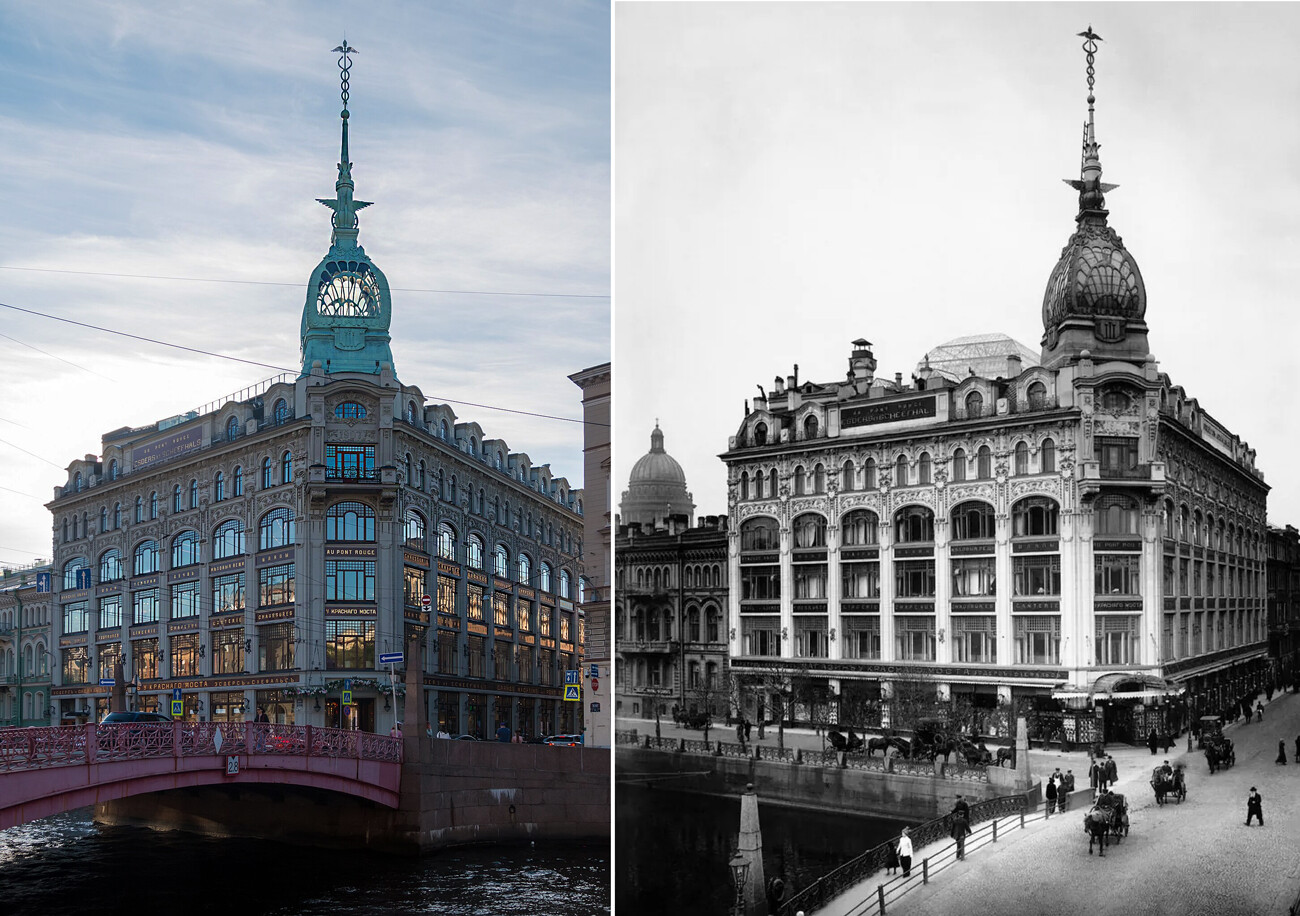
Initially, it sold clothing, footwear, lace, fur and small wares. Sewing workshops also operated in the building. After the 1917 Bolshevik Revolution, they were superseded by the Volodarsky Sewing Factory.
In the 21th century, the house underwent a large-scale reconstruction; the historical look of the facades was restored, as well as its sign boards and stained glass windows. Today, ‘Au Pont Rouge’ is a premium brand clothing store.
Address: Bolshaya Konyushennaya Street, 21-23
This large five-story house in the Art Nouveau style with a spire, similar to the ‘Store Au Pont Rouge’ department store, was built in 1909, designed by Ernest Virrikh and commissioned by the Guard Economic Society.
Initially, it was an elite military store with workshops for the capital’s officers. But, the regular public also visited this elegant store with pleasure. First – to gawk at the interiors. Then, the owners realized that this enterprise was profitable, and began selling civilian items, as well.

In 1917, during the Revolution, the store was looted and ransacked. In 1918, the building was nationalized and a distribution point opened in it. In 1927, the organization with the monstrous name ‘House of the Leningrad cooperation of the Leningrad Council of Consumer Societies’ began operating in it. Apart from trade enterprises, the building hosted soft beverage and toy production enterprises, as well as a bakery. The right of first refusal was given to shock workers (‘udarnik’; a term referring to a supposedly high productivity worker); two years later, the wares were rationed. Clothing sewing artels (a cooperative association of craftsmen living and working together), meanwhile, occupied the store’s workshops.
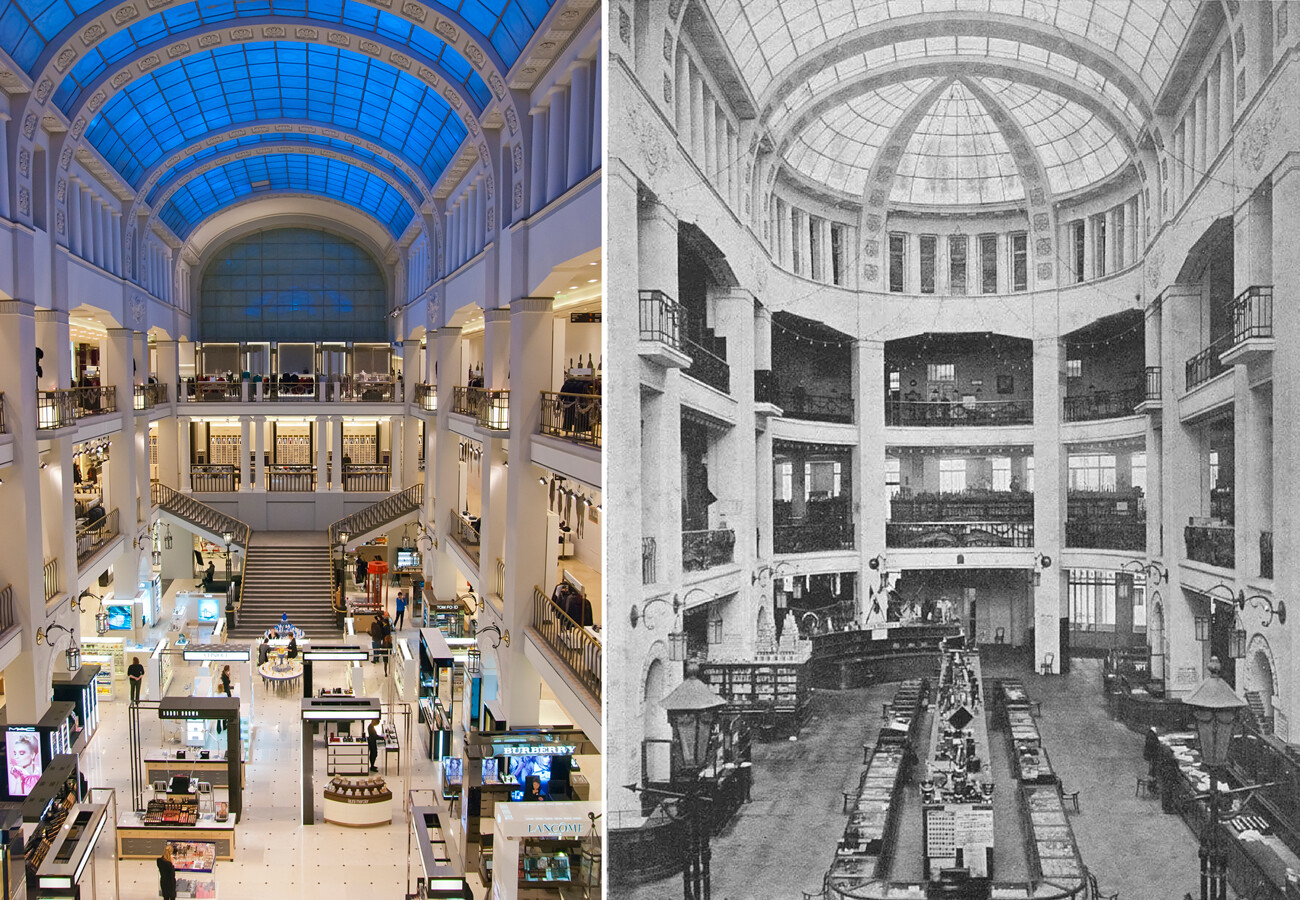
Later, the name ‘Leningrad Trade House’ stuck with the store. From 1965, the largest department of children’s wares of Soviet and foreign production in the city operated in it. School and New Year’s markets were also held there.
In the 21st century, DLT was restored. Today, it works in the same premium segment as ‘Au Pont Rouge’.
Address: Nevsky Prospekt, 56
The house of the ‘Brothers Eliseev’ trade partnership with gigantic windows and a sculpture-decorated facade was built in 1903 and designed by Gabriel Baranovsky. This is an outstanding example of the early Art Nouveau, dubbed ‘merchant-esque’: this style was characteristic of many trade buildings in the center of the capital.
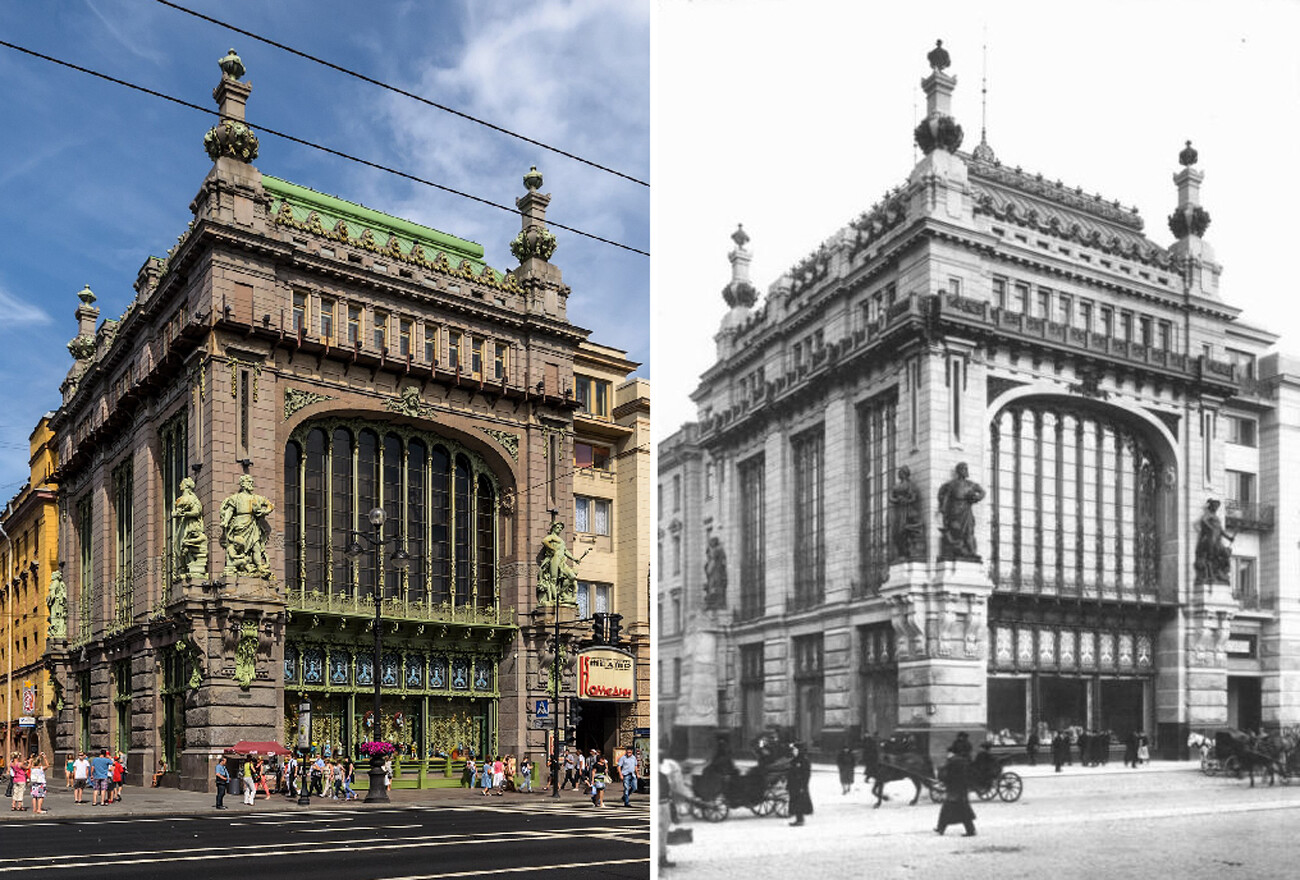
Apart from a luxurious trade hall with stained glass windows and stucco, the house hosted a restaurant, the Russo-Chinese Bank, a pawn shop, accountant courses, apartments and a concert hall, which has been occupied since 1929 by the Nikolay Akimov St. Petersburg Comedy Theater.
From 1917 to 1991, the Eliseev House was transformed into Gastronom #1 ‘Central’. The store retained its elite status even during the Soviet era: one could still purchase deficit wares in it.
On June 24, 1941, right after the beginning of the Great Patriotic War, the first propaganda posters calling for the defense of the Motherland – ‘TASS Windows’ – appeared in the Eliseevsky store windows.
The historical name of the store was reinstated in 1993. In the 21th century, the house was restored. Today, it hosts a grocery store, the museum of the history of merchants Eliseev, which you can visit with an excursion, a restaurant and a theater.
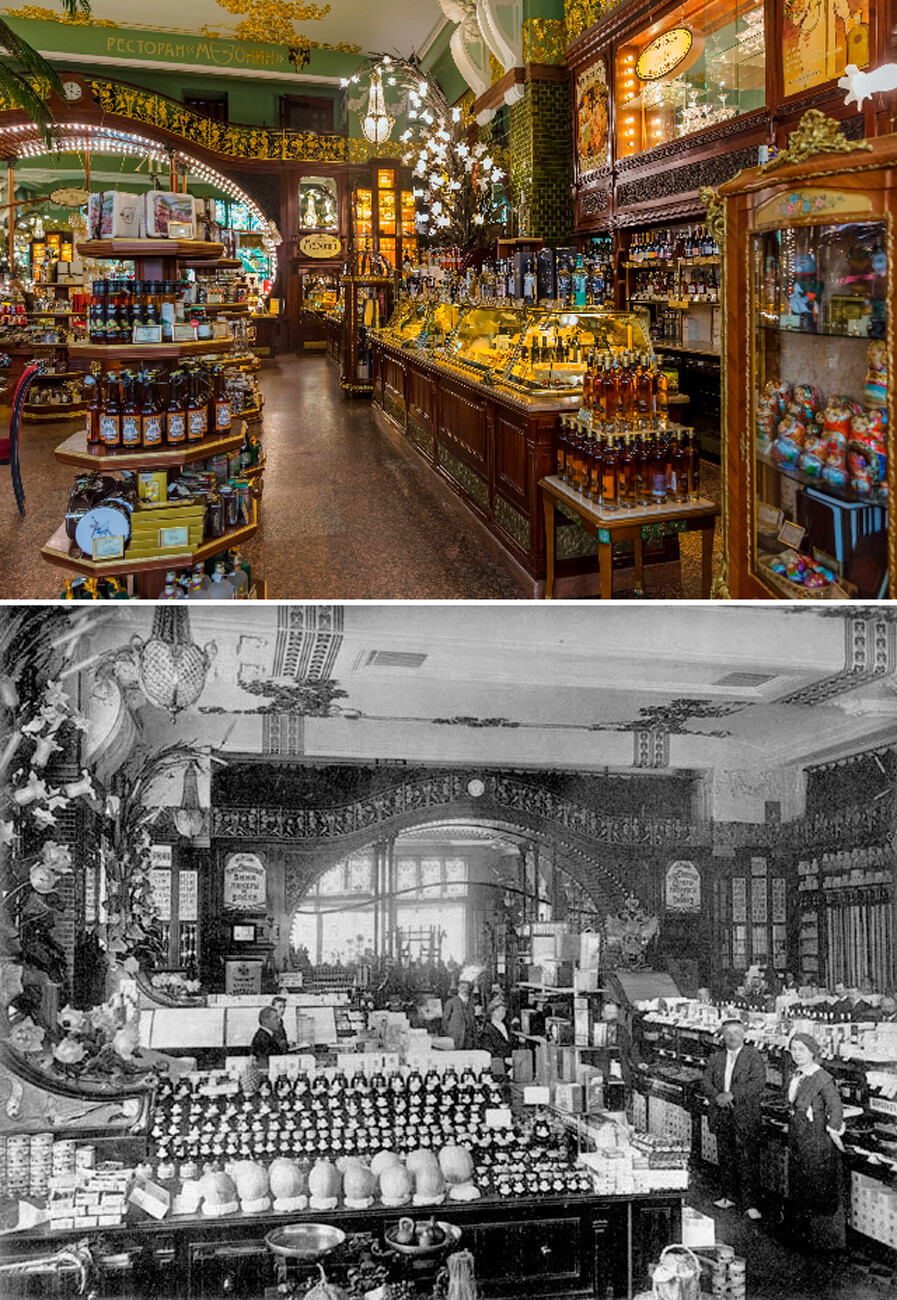
Dear readers,
Our website and social media accounts are under threat of being restricted or banned, due to the current circumstances. So, to keep up with our latest content, simply do the following:
If using any of Russia Beyond's content, partly or in full, always provide an active hyperlink to the original material.
Subscribe
to our newsletter!
Get the week's best stories straight to your inbox